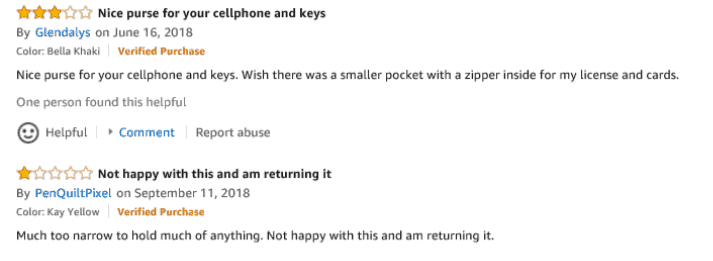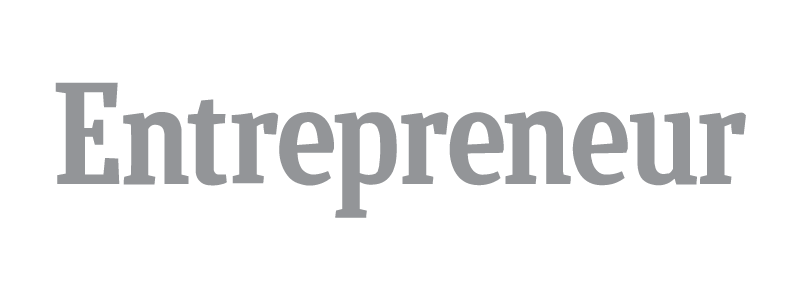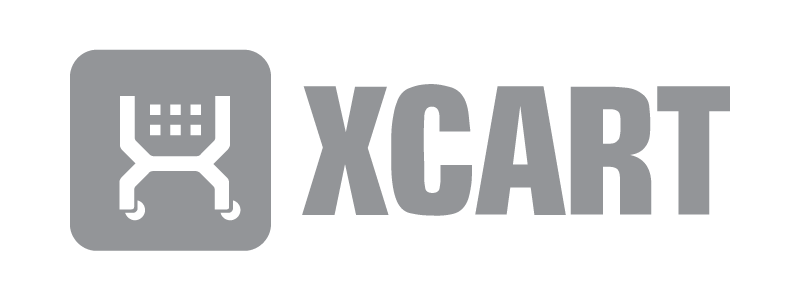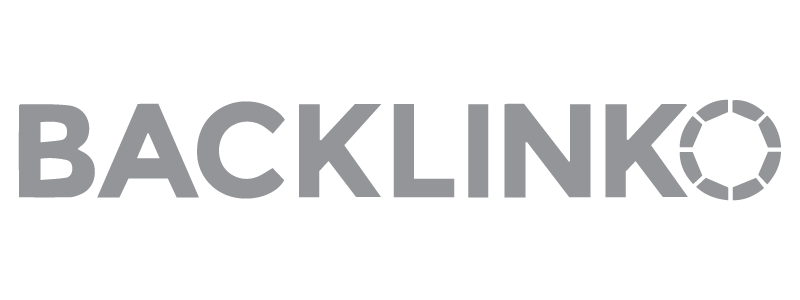Finally ready to launch and grow your own clothing line?
Going from idea to design, manufacturing, and marketing is enough to make anyone’s head spin. Trying to start without enough information will make it more time-taking and back-breaking than it should be.
Even if you don’t know how to sew a stitch, you can still launch a successful fashion business and own your business. In this guide, you’ll learn how to start a clothing brand. This step-by-step resource includes tips from over a dozen fashion pros and CEOs.
Learn Clothing Line Business 101
Before learning how to start a high-quality clothing business, you need to know the prospects. Sure, the fashion industry seems to be in demand, but you have to get stats to ensure that whatever you choose is still viable years from now when you start. Look at fashion trends, the growth over the years, and predictions.

The State Of The Apparel Industry
The clothing industry has recorded steady growth over the years. In 2023, U.S. retail ecommerce revenue from the sale of fashion apparel, footwear, and accessories is set to reach over 207 billion U.S. dollars. Even conservative reports still show growth. On Statista, we see that the online fashion retail sector could reach 300 billion dollars in sales by 2027.

The market keeps changing because of customers’ tastes and the environment. Keep that in mind before choosing products. Decades ago, you needed to suit up to work, then have casuals for the night out, and so on. Now, many companies allow casuals on all workdays.
Habits have changed
People want better quality clothes that they can wear at work, going out, or home all in one – and then just general comfy clothes they can chill in or work out in.
See Some Of The Leading Sectors To Get A Starting Point For Research
- Activewear: The global activewear market is growing at a 6.5% CAGR rate. By 2024, it should be almost double the value it was a few years ago. Start looking for smaller pockets in this industry. The female market is growing well, showing a 7.7% CAGR.
- Streetwear: In the last decade, streetwear has become a steady trend. It’s not just in online searches. The entrance of top brands like Louis Vuitton has made this expand from just the streets to become a luxury market. As a result, it’s contributing a steady $15 billion to the luxury fashion market. That’s only one side of it. Many small businesses in the streetwear niche are getting millions of dollars from investors because the potential is enormous.
- Baby Clothes: Despite a lesser number of people wanting kids, the increase in materialism, trends like “mini-me,” and more parents allowing kids to move their purchase decisions has caused this market to keep on growing. The US market is currently the largest revenue source despite not having the highest number of children. Source.
- Shapewear: Shapewear is another product niche that’s winning. Research shows a 7.1% CAGR forecasted in 2028. Given the $4,211.1 million in revenue that came in five years ago, we’re looking at more than double that over the next ten years. Source.
- Footwear: The market is expected to generate around $320.44 billion by 2023 from the $246.07 billion that was recorded in previous years. The market is tilting towards comfortable athletic shoes and casuals – the sneakers market alone is predicted to pull in $95.14 billion. Source.
Clothing Lines Business Models That Work
Starting a successful clothing line is more than knowing how to design clothes – you need to familiarize yourself with the ecommerce business models that are available for clothing lines. This will determine how you handle your inventory and find products & suppliers for your clothing brand.

Print On Demand
If you’re into words/small designs on clothing line items, or you’re not too much into drawing styles all the time or selling someone else’s, print-on-demand might work for you. Some stores mix it up with other print-on-demand products like mugs. You could print by yourself or start to use apps like Printful.
Print-on-demand absolutely works successful business model when you narrow down to a specific ideal customer. For example, you can niche towards lifestyles.

Inkitout is one brand that has gotten this down. It targets tattoo fans.
Custom Wholesale
There’s regular wholesale; then there’s custom wholesale. With regular wholesale, you stock up the clothes and sell as orders come, but with custom wholesale, you customize the pre-made clothes to fit your vision when you start. You can embroider, print, and tweak, as long as it suits what you’re going for.
This requires more capital from crowdfunding or angel investors than print on demand to start, and you’ll have to store inventory. But, with a solid business plan, it can work well. It’s cost-effective to get products because of the bulk.

Perfect Sculpt is an ecommerce wholesaler that sells in the shapewear and lingerie niches. The strategy that works for them is selling to retailers (with an MOQ) and selling directly to the general public.

Cut And Sew/Private Label Ecommerce
If you want to differentiate your own line completely from other brands when you start, then this is the way to go. Arika Sato has her own private-label clothing brand.

For cut-and-sew, you design, sketch, source fabrics, sew, plus ecommerce marketing. The process of getting designs turned into clothing might take months, especially if you want to sew more of them. It’s hard work, but you’ll benefit from these tips from other fashion brand business owners.
For private label
You do the designs or tweak those of the manufacturer. Here, you have to find a manufacturer to cut and sew the fabrics into the starting clothing design that you’ve specified. So, you’re paying for full production. There’s potential for higher perceived value from your audience.
Custom Couture Business Model
Custom couture fits each garment to the individual customer. People like custom clothing, so the passion is there, but it will most likely cost you a lot to start, meaning that you have to charge more than the average ecommerce clothing company.

Hockerty does it. It creates and sells custom suits by providing many options for customization to website visitors.
Additional Resources
Research The Fashion Market and Identify Competitors

You need a product AND a specific target market. Casting a wide net will not increase your probability of success; targeting everyone will leave you with a hard business to market and much more competition. Instead, find your niche so that you can market easily and get through to a passionate audience.

Broad Niche For Own Clothing Brand
A broad niche is a sector in your industry that you want your business in, for example, a boutique. Selecting a broad niche is usually easier than getting a micro-niche, especially once you have a general idea of the type of fashion business you want to go into.
These are some of the broad niches in the clothing line market:
- Activewear
- Swimwear
- Women’s corporate clothes
- Men’s corporate clothes
- Sleepwear
- Underwear
- Female casual clothes
- Male casual wear
Micro Niches
Your micro niche places you in the exact spot of your target audience. It’s your specific target audience + the specific product, for example, casual clothes for tall women. It’s crucial to have an idea of this as an ecommerce startup. Once you develop your personas, you can drill down even further.
Some of the starting clothing line microniches are:
- Creative workwear for plus-size women
- Print-on-demand dog lovers’ apparel
- Meggings
- Fast fashion for men

A Clothing Line Could Be Discover A Market Problem
Make a list of problems that you want to solve and research. You might think that you have found an in-demand market, but if you don’t get data to validate what you have discovered, you will miss key points that should influence growing your business idea.
Your research will help you narrow down your ideas to the best ones. Also, some markets are so saturated that gaining traction will be so hard compared to others.
Research Manufacturers And Explore Your Product Ideas For Your Clothing Company
It’s hard to truly dial in your products without first time exploring what’s out there. You need to research potential manufacturers and try some Google searches. Before you do that, you need to know the capabilities you’re looking out for. If you choose to private label for your starting clothing line, then find those that provide custom changes and do not only sew your label in.

Also, get pricing from many and compare. Check out what they have done previously to get inspiration. You can also check out Alibaba and other marketplaces to see similar apparel that manufacturers are making to have an idea of their finishing, processes, and factory. Then get initial samples.
Research Your Competitors To See What’s Working
Every market has competitors. Even if you’re bringing a new idea, there are still competitors – probably selling the old style.

Research your competitors, and check the price point of their products. Many people are not willing to pay higher when there are many lower-priced options, especially if you’re just starting a business. Do some digging to see what their social media presence looks like. Also, check out their designs and products, and see the reviews customers are leaving. This should give you an idea of extras that your target audience is looking to see.

Look at their brand messaging. The more you know about their messaging, the more you can differentiate yours from it and make your brand unique.
Find out their traffic strategy.
- Where do they get backlinks from?
- The topics/keywords that they rank for
Ahrefs and SEMRush make getting this information easy. Put in your competitor’s URL. You don’t need to know many – just know one. Both tools can get you the others.

Develop Your Personas To Tailor Your Messaging And Brand Right

You can’t effectively market your products without understanding your target audience. You need insights into who your customers are.
There are many ways to research your TAs. You can use Facebook audiences, online forums, and surveys. Collect information that allows you to build a fictional person that you’re selling to.
Get these to build your persona:
- Name
- Age
- Location
- Hobbies
- Profession
- Pain points
- What they need/want your product for
- What’s important to them when buying
- Concerns they have before buying
You can take an educated guess for some of the information here, profession and name, for example. Build more than one persona.
With effective target audience research and buyer persona mapping, you can tailor your messaging, product, behaviors, and concerns to the groups in your persona that you are selling to.

Additional Resources
- How to Create Detailed Buyer Personas for Your Business
- How to Start a Content-First eCommerce Business
- Andreu Fernandez of Hockerty
- Brian Lim of Emazing Group
- Mike Vensel
Draft a Business Plan and Start Gathering Costs

A detailed business plan is not only for brick-and-mortar businesses. Drafting your business plan will prepare you for potential challenges and opportunities in your market as a startup fashion entrepreneur. While drafting it out, pay attention to:
- Your value proposition
- Your business model
- Market analysis
- Marketing and Sales strategy
- Start-up costs like tech and POS
- Financial projections and management
As you prepare your business plan, ensure that it’s flexible because market and customer behaviors change. I chose not to go in-depth into the business plan because I did a step-by-step in this article. There’s also a template that you can fill out that will impress investors.
Cost Analysis

Understanding how much it costs to get your products, set up your store, and keep it running will help you set the right pricing point, plan your marketing, and reach your break-even point at the right time.
These are the costs to consider:
- One-time Fixed Costs: These costs do not change regardless of your inventory. It includes business registration, website setup, and branding.
- Monthly Software Costs: You’ll need marketing automation, cross/upselling apps, and fashion POS to operate and manage your business. Most great ones aren’t free.
- Production Costs: This includes the cost of producing it (yourself) or getting it from your manufacturer and the price you’ll pay to get it shipped to you/fulfillment center.
I have prepared a free startup checklist and business plan. It’s totally free.
Set Up Your Business and Get the Legal Stuff Out of The Way
Before you set up your online store or get products from manufacturers, there’s one thing you should do – set up the legal part of your business. Check if the brand name you have in mind is available.

You should at least incorporate your new business and get your licenses before contacting suppliers. You might also need to trademark your concepts.
Do the following:
- Choose a business name
- Register your company
- Get your business licenses and permits
- Get your Employer Identification Number
- Open a business bank account
Additional Resources
- How to Make an Ecommerce Business Plan for Your Startup
- 15 Things Successful Fashion Designers Don’t Do
- Do I Need A Business License To Sell Online
- How to Sell Clothes Online + Best Places to Sell
- Fashion Industry Network
- Jessica Louise
Design and Source Products For Your Clothing Line

Having your designs in your head and on paper are two different things. Except if you plan on being the sole fashion designer, tailor, and all in all, you need to transform your design into things that your manufacturers can understand. It will save you a lot of time in back-and-forth.
Concept Stage
This is where you make sketches or take pictures of what you want to design. The designs will help the factory know what you want. You’ll need to get a designer to digitize your ideas using software like Illustrator. If you’re going to do it yourself, learn how to design clothes on digital.
Create A Tech Pack

A tech pack is your product’s blueprint. It minimizes errors in sampling and production because it shows your manufacturers the exact steps and materials that you want, and helps you track production development.
It should have:
- Measurements
- Detailed explanation of your concept and artwork
- Fabric type
- Stitching
- Color of material and stitching
- Accessories (if any)
- Label and tag information
- Packaging and tracking instructions
It’s a whole lot of work, but you can either get a consultant, designer or use online tools to do it.
Source The Fabric And Materials

You need to give your manufacturer’s details on the fabric, zips, elastics, interlinings, straps, claps, and other materials that you want. These tiny details are often overlooked.
Explore materials
First to get the quality, composition, weight, and color that you want. When you launch, you want your products to impress your customers so that they spread the word and come back. Find out from manufacturers the materials that they can get on their own and the ones that you need to source for them.
Screen Printing, Artwork And Labels
Know the options available for tags, labels, artworks and such. Also, before recording it in the tech pack, measure the placement of the designs, and your labels (print or tag), then record the exact measurement and placement down, be explicit.
Make Both Digital And Physical Pattern Making
For the sake of consistency, cut your design into patterns that can be used for production. For example, a sleeveless t-shirt will have the bodice pieces and shoulder straps. Do it on the digital angle to send to your manufacturer electronically in your tech pack, and physically as well. Pattern making will keep your style throughout.
Ensure that you grade it up and down for the other sizes in your own clothing line.
Final Samples
From the initial samples that you received earlier, pick out the ones you like best, update with your tech pack, and get final samples from your clothing manufacturer. Ensure that you look closely to check for improvements and potential issues to filter out the manufacturers that don’t get your concept right.
Test Your Product
Always test your product before you go for mass production. Test it yourself and get extra eyes and hands as well. Get feedback from family, friends, and other third parties – possibly, potential customers and influencers. Get the thoughts of people and make necessary changes.

Agree On Timelines With Product Suppliers
Agree on the production time with the factory. Ensure that there’s enough time between the end date of the manufacturing process and the launch date. You should have a section in your tech pack on timelines and following up.

Find Out The Production Lead Time
Production time is one thing, the lead time is another. Your items can be produced today but shipped in six weeks. Find out what the lead time is. Beware that any changes you make later on will affect the lead time.
Inquire About The Packaging And Delivery Options
Your packaging can add to the perceived value of your product. You could re-package each item yourself, but wouldn’t it be easier if the clothing manufacturer does it for you? Find out the packaging options that they have as well as the delivery.
For the first set
You might want to have it delivered to you instead of your Amazon fulfillment center. Find out how they deliver to your country and get the prices for delivery, and the potential customs you might need to pay.
Don’t forget
Check the apparel and raise any issues fast if things don’t look as you specified.
Consider A Sourcing Agent

If all the steps of finding the right clothing manufacturer and making sure things don’t go wrong seem like a back-breaking task, get an expert. There are sourcing agents and tools like Sewport to help you get through it.
Additional Resources
- How To Find Legit Manufacturers
- Perfect Picks: Choosing Fabric for Clothes
- Fabric Dictionary – 200+ fabric names
- The Step By Step Guide To Creating A Tech Pack
- Arika Sato
- Jake Smith of Smithers Swimwear
Craft Your Clothing Line Brand

Beyond the product, what will be the cornerstone shared interest with your target market?

Your customers will position you in this pyramid, and your relations and communication with them will influence where they place you.
Study Brands
It helps to study the brand positioning of some of the top clothing line brands to get inspiration of qualities you want to incorporate. People are most likely to buy from a brand whose story they can relate with. It’s even more important in the apparel industry because people buy clothing lines that connect with their identity so your brand will become an extension of how they see themselves.

Brand Differentiation Strategies

Beyond the difference in color and fonts, what else do you have? If you think that just showing a lifestyle is enough, then you’re wrong. I can’t count how many businesses are in athleisure. If you can’t differentiate and evolve out of the same box most of them are in, you won’t sell as much.

Think of the points of differentiation that you have against competitors and choose the top three to focus on. Your strategy might fall in:
- Service value, like quick help through live chat, exceptional customer service, etc
- Your brand personality/mage
- The people that represent you (employees, influencers, etc.)
Product Differentiation Strategies
The most popular product differentiation strategy is price and features, but those two are very easy to copy by your competitors, but that doesn’t mean that they aren’t useful. Other product differentiation strategies are:
- Looks (luxury, vintage, etc.)
- Better buying process (personalization, experience)
- Better fabrics and other materials
- Better packaging
- Pain-points that only you remove
Customer Value Statement
Your value statement describes why people should buy from you. It incorporates your value proposition, which should be the desired after-state that people should have when they buy your clothing line from you. What psychological or self-fulfilled needs are they getting from wearing the apparel that you produce?
Value Proposition
Your value proposition should be simple, memorable, desirable, and unique, encompassing:
- Your target customer
- Statement of need
- Your products
- Category
- Benefit
Use The Community
For example, if you sell to petite women, you can create a community sharing how hard it was to get dresses that fit until they got to you, that’s good. Not only are you showing value, but you’re also creating a sense of belonging for potential customers.
Brand Positioning Statement
One way to look different is through a unique brand proposition. That will have your:
- Brand’s outlook
- Voice
- Philosophy/personality
- Why people should buy from you
- Vision/mission
Brainstorm what should motivate people to buy, create a catchy tagline, and think about a short mission & vision.

The mission should be focused on how you want to get your vision to life, what you do, who it’s for, and how you do it. Your vision should be focused on why you’re in business and what the ideal future is like for the brand.
Additional Resources
Product Marketing & Pricing

Product marketing and pricing both go together because this is how your products will be presented and sold. You need a solid plan in place.

I’ll show you the basic offers that you should have, how to set pricing, and take photos.
Have Offers And Promotions To Get Sales

You should have the basic offers and promotions set before you launch. Have a loss leader/tripwire product that you use to get the first sale. For those products, you’re not thinking of profit, but ways to get people to try your clothes, get their emails to market to them, get money through down/up/cross-selling, and score a second sale. iHeartRaves runs seasonal storewide promotions on their Rave Gear.
Margins (Floor And Ceiling Prices)
To set prices/margins, calculate how much it costs you to get your product. That includes how much your manufacturers/suppliers charge per item and the price to ship each item from the factory to Amazon or whatever fulfilling partner you use.
Look at competitors’ stores
See what the ceiling and the floor prices are for the exact same benefits and (possibly) quality of fabrics. The ceiling price is the highest, and floor is the lowest. Set the most that you think you can sell yours within those two ranges while still having a 70-100% markup on your expenses.
Set your floor prices as well
That’s discounted rates. Make sure that you’re still making a profit from your core products. If your initial markup was 70%, you could set 30% markup as your discount price. So, you’re still showing customers that there’s a 40% discount while still making a profit.
Get White Background And Lifestyle Product Photos
Get a photographer or learn how to take professional pictures, and use this product photography guide and take candid product photos. Have different angles – back, front, side, seam, closeup, each color/variation, etc.
Have the clean white/blank background so that your own clothing line will pop off and be the center of attention. Also, take lifestyle photos; someone wearing the clothes on a typical day with an appropriate background. For example, activewear while running or in a gym.
Also, have promotional apparel together. If you’re giving bundles as your upsell, get a picture of the whole look together.
Additional Resources
- 19 Persuasive Marketing Techniques For Product Descriptions That Sell
- DIY Lifestyle Product Photography For Ecommerce Sellers
- Ecommerce Product Image And Video Tips to Increase Trust, Engagement and Conversion
- Apparel Industry Price Point Definitions – Terms of Interest to the Fashion Industry
- Heather Leigh Swimwear
Launch and Promote Your Online Store

Choose the right ecommerce platform for your business. WooCommerce, Shopify and BigCommerce are at the top of my list, but you might want others. Something highly customized might need an open source platform like X-Cart. When designing your store, make sure that your images and colors are rightly placed to give off what you stand for.
Many stores still have product photos that are difficult to see on a small screen or a lengthy checkout process. In fashion, people are going to be coming in from Instagram to your website.
You want to make sure you design for mobile screens – mobile obsession is the most important trend in ecommerce now. Make yours seamless and compelling. Responsive design isn’t enough, you need to cater to mobile users.
Learn how to promote your brand using content marketing; produce content, get links from other sites through guest posts, sponsor a fashion show think New York, and leverage social media. Also, reach out to bloggers and influencers – IG is the place to be now.

On average, you might spend between $130 to $1,400, or more depending on who you contact., but the good thing is that users are ready to buy. It’s a ripe market that you can gain from.
It doesn’t end there. Once you start getting orders, study your customers to see what they like and don’t.
Additional Resources
- 25 Successful Marketing Strategies From The Fashion Industry
- 15 Instagram Marketing Tips to Spread Your Ecommerce Brand Like Wildfire
- Instagram Influencer Marketing
- BigCommerce Vs Shopify
FAQs
Ready To Start A Clothing Line Brand?
I hope these tips for starting a clothing line answered the questions you have. Starting a clothing brand isn’t a walk in the park, but consistent hard work can get your a successful clothing line business.
Start researching the niches that you like and getting your designs digital. Don’t forget – having a site with products doesn’t mean you have fully launched. Promote it and work hard to keep customers coming back. Remember that your customers are more likely to find inspiration from external sources like influencers and bloggers than directly from you, so use them.
Do you have any concerns that I didn’t address? Reach out in the comments, and I’ll reply ASAP.









